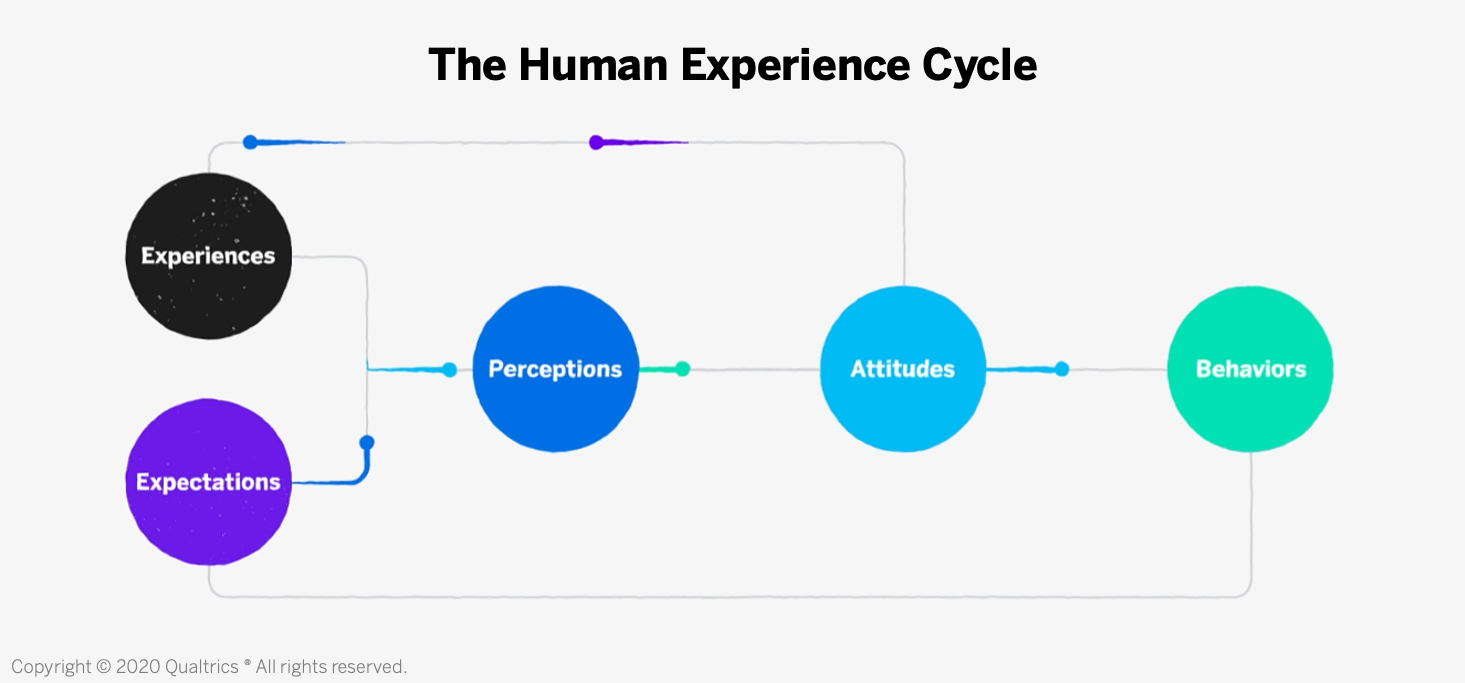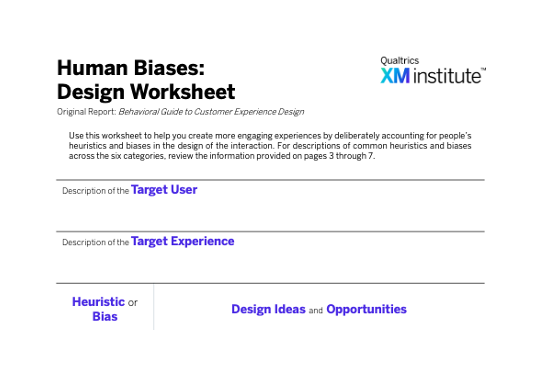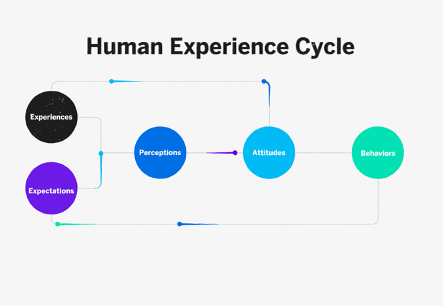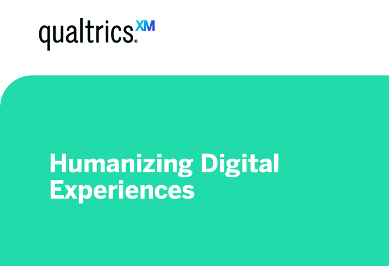Use this Launchpad as a starting place to learn how some universal human traits affect people’s experiences with your organization and how to use that understanding to create emotionally engaging experiences that better reflect people’s true needs, desires, and motivations. Then explore the key resources included at the bottom of the page to expand your knowledge of this essential XM topic.
The Fundamentals
Experience Management (XM) is all about people. Customers are people. Employees are people. Partners, suppliers, and prospects are all people. Even “organizations,” at the end of the day, are really just large collections of people. Everyone who is creating or consuming experiences is a human being, which means that before an organization can effectively manage the experiences it delivers, it first needs to understand and embrace – at scale – how the people who interact with it actually think and feel.
However, this is easier said than done. Human beings are complicated, and it can be difficult to accurately anticipate people’s decisions and reactions, let alone design end-to-end experiences that successfully result in specific emotions and behaviors. But neglecting the human-side of Experience Management is a huge – and costly – mistake.
People will have experiences with your organization. Experiences are, after all, how human beings interface with the world. And how they feel about this experience with you – whether they’re delighted, frustrated, reassured, or confused – is going to have a significant impact on their loyalty to your company. So understanding and catering to the needs and preferences of people across your ecosystem isn’t just a nice thing to do… it’s a crucial part of building long-term value for the business.
Luckily, while people may be complex, there are some fundamental characteristics that every person shares. Recognizing these common traits will help you first uncover people’s true needs, desires, motivations, and expectations and then translate that understanding into engaging – and ultimately profitable – experiences.
The Six Key Traits of Human Beings
While every person who interacts with your organization will have slightly different preferences and requirements for their experience, there are some universal human traits that you should recognize and incorporate into your XM efforts to build deeper emotional ties with the people who interact with you. To help organizations do this, we have identified The Six Key Traits of Human Beings, which holds that people are:
Intuitive
People have two different modes of decision making. One mode is called Rational Thinking, which is slow, logical, and deliberate. The second mode is called Intuitive Thinking, which is fast, automatic, and relies on a set of heuristics (mental rules of thumb) and cognitive biases. Perhaps surprisingly, human beings make almost all of their decisions using Intuitive Thinking, yet most organizations focus their attention on design experiences that appeal to people’s rational mode.
Self-Centered
People naturally view the world through their own personal lens, which, because of their unique life experiences, is totally different from anyone else’s. This individual perspective often separates the organization from the people it’s designing for. Employees and leaders are inherently more familiar with their own companies’ processes, structures, products, and services compared to their customers, partners, suppliers, or prospects. A disconnect can even exist between the people in, say, HR departments who are designing employee experiences and the employees who actually go through those experiences.
Emotional
People remember experiences based on how they made them feel. Human memory is not like a videotape; it does not record every moment of an experience, placing equal emphasis on each second. Instead, it is like a camera, taking snapshots at certain crucial moments and then retroactively judging the experience based on those snapshots. People take these “snapshots” at the most emotionally extreme points and the end – a phenomenon known as the “Peak-End Rule.”
Motivated
People all strive to fulfill our four intrinsic needs: a sense of meaning, control, progress, and competence. So when organizations are designing experiences for customers, employees, partners, etc., they need to spend less time focusing on things like monetary compensation or price – which fulfill extrinsic needs – and more time helping people feel like they are fulfilling these intrinsic needs.
Social
Human beings want to connect with others who are “like them,” and they tend to trust those people institutions more than they trust other people or institutions. So to create good experiences, XM professionals should not only recognize that people’s social groups are an important area of influence, they should also help employees, customers, and partners build meaningful connections with each other.
Hopeful
People flourish when they envision a positive future. So organizations will be more effective at motivating their employees, leaders, customers, and partners if they paint a picture of future success that addresses their individual needs and aspirations.
How People Process Experiences
Designing and delivering emotionally resonant interactions also requires an organization to understand how people process and flow through their experiences. To help facilitate this understanding, the XM Institute has created the “Human Experience Cycle,” which is a simplified view of this very complex system.

Experiences
This element is about what actually happens to a person during an interaction.
Expectations
This component is about what a person anticipates will happen during an experience, which is likely heavily influenced by previous interactions with the organization, marketing messages, and experiences with similar businesses. For example, “I think it will be easy to return this product,” “It’s going to be painful to cancel this contract,” or “This mandatory training is going to be so boring.”
Perceptions
These are immediate, automatic evaluations of the experience based on the actual event and filtered through the lens of their expectations. People perceive experiences across three dimensions: success (were they able to accomplish their goal?), effort (how easy or difficult was it to accomplish their goal?), and emotion (how did the interaction make them feel?). For example, “That was easier than I thought,” “That was surprisingly fun!” or “That conversation was even more painful than I expected.”
Attitudes
These are semi-persistent mindsets that reflect how someone feels about the organization. These attitudes are not static. They change over time as people have new experiences and form new perceptions. They also shift as memories alter and blur, and we craft different stories that weave together our discrete experiences. For example, “I love my job,” “I want to recommend that business,” or “That company creates high-quality products.”
Behaviors
These are concrete actions a person demonstrates. These behaviors are heavily influenced by a person’s attitudes and are ultimately what create value for an organization. For example, a customer purchasing more, a partner renewing its contact, or an employee accepting a promotion.
Tips for Taking Action
So how should a company go about designing experiences that reflect how people actually think and behave? Here are some tips for taking action:
Propel Experience Design capabilities
Experience Design – which refers to a repeatable, human-centric approach for creating emotionally resonant experiences and is one of the XM Skills under the Disrupt Competency – is an essential activity for XM-centric organizations. It allows companies to develop a deep understanding of people’s real goals, desires, and beliefs and then translate those sincere desires into opportunities for the business. Organizations should spread these Experience Design capabilities and mindsets across the entire company so employees in every role are capable of creating positive experiences.
Facilitate intuitive decisions
Instead of designing interactions based on the premise that people are making logical, rational decisions, first recognize that people mostly make decisions unconsciously using heuristics and biases. Then, apply that understanding to craft experiences that address how people actually think, feel, and behave. For example, because of loss aversion, people tend to fixate on what they’ve lost when products, processes, offerings, or policies change, so roll out new changes slowly, explain why the updates are important, and highlight the positive aspects of the changes.
Create positive memories
Because of the Peak-End Rule, what people experience is not what they remember. This means that loyalty isn’t driven by how someone’s experience actually happened, it’s driven by how they remember the experience happening. To design experiences that lead to positive memories, it’s important to disproportionately focus on the moments that matter most (Moments of Truth), to smooth transitions between channels and people, to recover quickly from your mistakes, to enable pleasant surprises, to dampen negative emotional spikes, and – most importantly – to end experiences on a high note.
Start talking about emotions
Organizations have a natural aversion to discussing emotions, often dismissing them as too “squishy” or “soft” to focus on. This lack of dialogue, however, keeps organizations from fully understanding and addressing the wants and needs of the people they design for. One way to start talking about emotions is by incorporating the Five As of an emotional response – which range from Angry to Adoring – into activities like employee training and coaching, Journey Mapping, and survey design.
Instrument the Human Experience Cycle
To manage people’s experiences across the Human Experience Cycle, work from right to left. Start by identifying which customer, employee, partner, etc. behaviors drive the most financial and strategic value for your business, then determine which attitudes you need to cultivate in order to ensure people demonstrate those particular behaviors. Then work on creating perceptions that lead to those attitudes, and finally, design experiences and set expectations in a way that will generate those desired perceptions.











